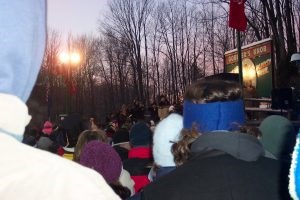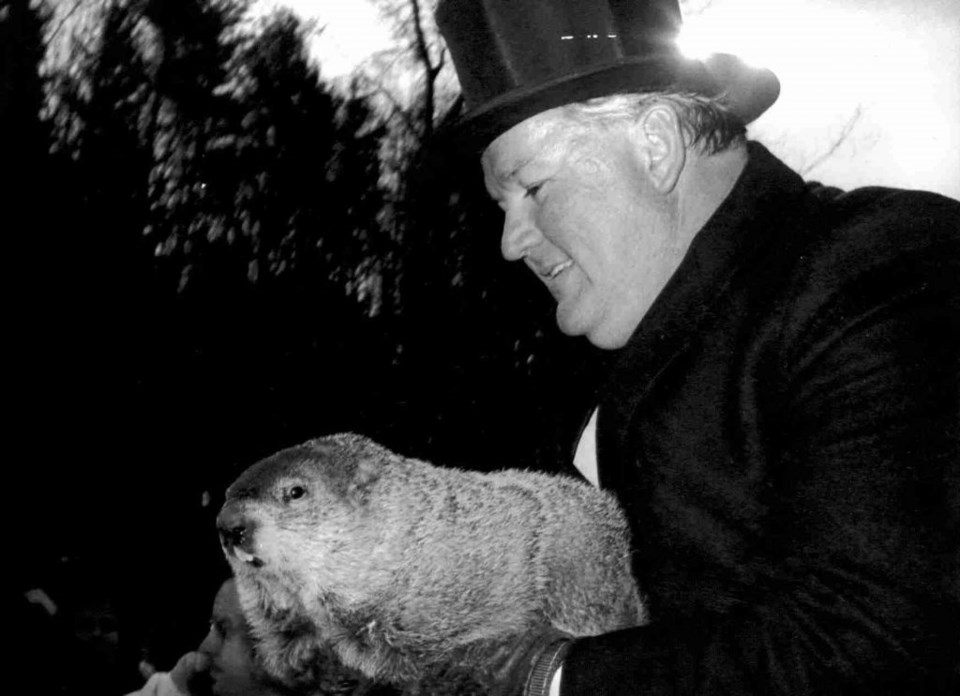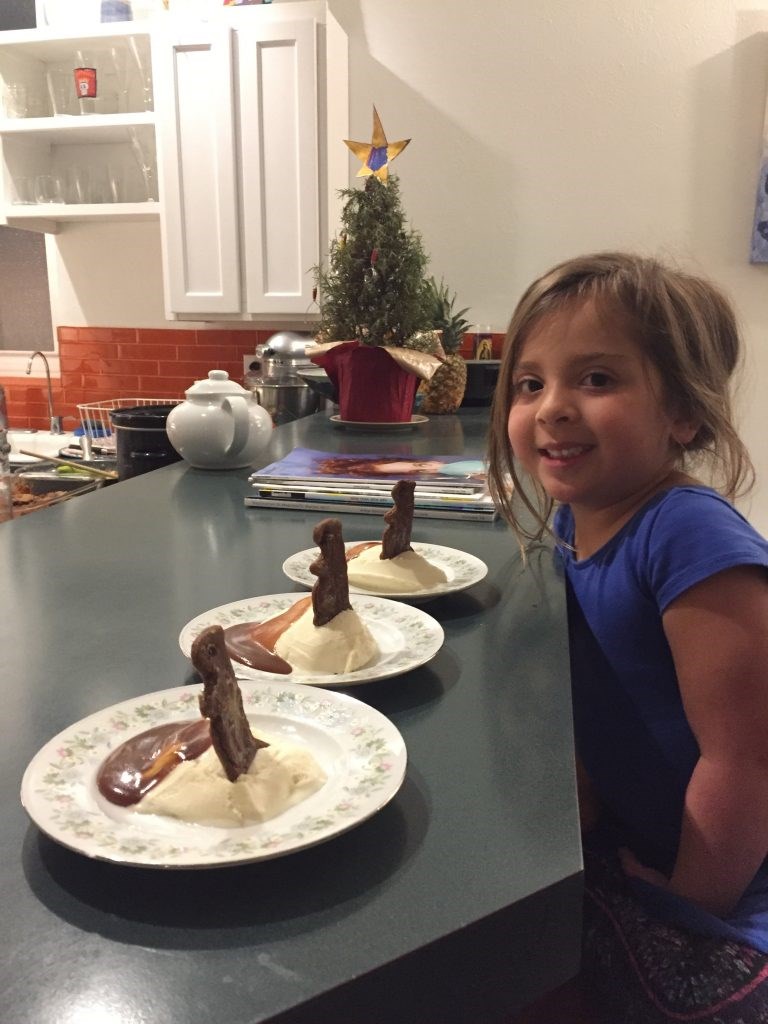This content was originally published by the Longmont Observer and is licensed under a Creative Commons license.
This Saturday, February 2nd, thousands of people from all over the world will trek to Punxsutawney, PA to witness a groundhog’s prediction about the length of winter and I won’t be one of them. Granted, most of the pilgrims will be from Pennsylvania, where the winters are soul-suckingly gray and dreary. Instead, I’ll be doing a workshop at Kitchen Co on Main Street in Longmont to try to explain this curious holiday through the making and baking of some extraordinary molasses cookies.

I am a long time Groundhog Day supporter, having first made the trek to Gobbler’s Knob back in 1991, the year before Bill Murray’s popular and very Zen “Groundhog Day” movie increased the number of vigilants who stomp all night on Gobbler’s Knob from several hundred to several thousand. My niece had given me an intriguing cookbook entitled “The New Gourmets and Groundhogs and the Second Helping” by Elaine Light, and first published by Groundhog Press in 1968 and it piqued my interest. No one from my family wanted to go. I drove alone, leaving State College at 5 am, driving west on Route 322 as it changed from a four lane to a two lane. Finally, I left the highway and bushwhacked down county roads by the light of a silvery full moon. Snow banks glistened as I drove over the high country of the Allegheny Plateau, past villages named Panic and Desire, and I made it to the Knob just before dawn.

The pearly morning light was brightening as I reached my destination and I soaked in the sight standing next to a blazing bonfire. The crowd was ecstatic. A polka was playing and people clapped their hands and stomped their feet on the frozen ground to the beat. Folks were waving and hugging and holding up signs for the television cameras Tuxedoed, top-hatted Inner Circle members lined the stage and very ceremoniously did what they had been doing since 1887. Someone knocked loudly on the burrow with gnarled wood cane. “Give us the hog!” roared the crowd. The handler, with his elbow-length leather gloves, opened the small door and pulled out a reluctant Phil. The crowd went wild. He held him above his head. We were ecstatic! In the familiar arms of his handler Phil relaxed and whispered his prognostication to the interpreter. He saw his shadow—six more weeks of winter. Surprise!
After Phil’s forecast there is a hasty exit down the hill to get to the many available community breakfasts. I fell into a line at the Lions’ Club, behind two foreign exchange students from Brazil who said they were there because they had always heard about Punxsutawney Phil at home and they wanted to see what the story was. They were happy to have made the effort to come. Another couple from eastern Pennsylvania stood behind me. When asked why they had come, the man replied, “How often do you get to be a part of a folk legend?”
About the legend:
The origin of the groundhog tradition is the Christian religious festival of Candlemas Day. An old European belief is that hibernating animals, especially badgers, wake up on Candlemas Day, February 2, to take stock of winter. If the day is sunny, the animals are frightened by their shadows and crawl back into the earth for another 40 days. If it is cloudy, the animals stay aground. German settlers to the area transferred the forecasting power to the most likely—and abundant—candidate. Punxsutawney Phil, the “Seer of Seers,” was born.
Candlemas Day is also known as the Feast of the Presentation of Our Lord Jesus and the Feast of the Purification of the Blessed Virgin Mary. Many Christians take their candles to church to be blessed and the following day, February 3rd, is the feast day of Saint Blaise who cured a young boy who nearly died from a fish bone caught in his throat in the 4th century in Armenia. I remember getting my throat blessed as a child, with two crisscrossed candles, just at the time of year when we all either had sore throats or had just gotten over one.
In France and Belgium, February 2nd is Pancake Day and crepes are made to call forth the sun with their round shape. The Virgin of Candelaria, La Morenita, is celebrated in Tenerife, one of the Canary Islands settled by Spain. An important Mexican tradition is to celebrate the presentation of the Christ child in the temple on February 2nd with family meals that include tamales.
There is a recurrent theme in all these religious early February observances but the Christian religious holiday—and Groundhog Day—is rooted in something much deeper.
Before organized religion, humans observed natural events and the rhythms of the seasons in search of order. The sun, the moon, stars and recurring natural phenomena were attributed qualities understandable within the human experience.
On December 21, the shortest day of the year, the sun is dim. Darkness and cold initiate a “hunkering down” response, in hibernating animals and humans alike, to permit the reserves of the clan to withstand that quarter of the year with no replenishment. The spring equinox marks the season of rebirth, but before that, 6 weeks earlier, there is a rush of life in the female animals that prepare to give birth. Ancient Celts celebrated Imbolc, the Feast of Lactating Ewes on February 1-2, the day that the sun passes the mid-point of the winter quarter.
The Celtic goddess Brigid, who symbolizes fire and hearth and the earth mother who feeds her children, was a most powerful figure in ancient times. During the time of Christian conversion, she morphed into St. Brigid in Ireland and the feast of Candlemas, which celebrates Mary’s purification 40 days after giving birth, replaced the Imbolc festivities. This layering of meaning cloaks what is most basic—that midwinter is a great time to have a celebration and come out of the burrow.
Groundhog’s Day is a silly spectacle but the deeper message is what is important. The “Feast of the Lactating Ewes” might be a hard sell in this country, especially up against the Super Bowl, now in its fifty-third year of marking the end of the winter season for most Americans, but celebrating the end of the dark days of winter and the imminent return of the sun is something that we all can do.

Sift the flour, salt, soda, baking powder and spices together. Set aside. Cream butter and sugar together until light and fluffy. Blend in molasses and egg yolk. Stir in flour mixture and mix well. Form into a ball. Wrap in plastic wrap or wax paper. Chill for one hour or longer.
Preheat the oven to 350°F. Prepare two baking sheets by lining them with parchment paper, or spraying them with cooking spray, or greasing them. Roll out a small amount at a time on saran wrap or a pastry cloth to a thickness if 1/8 inch. Cut out the cookies with a lightly floured cookie cutter, groundhog shaped, if possible. Place the cookies on prepared baking sheets. Brush with the lightly beaten egg. Decorate with a currant for an eye. Bake for 8 to 10 minutes in preheated oven. Cool slightly before removing from the baking sheet.


